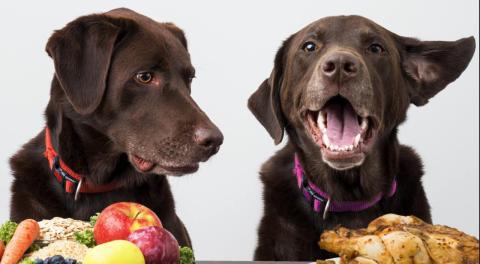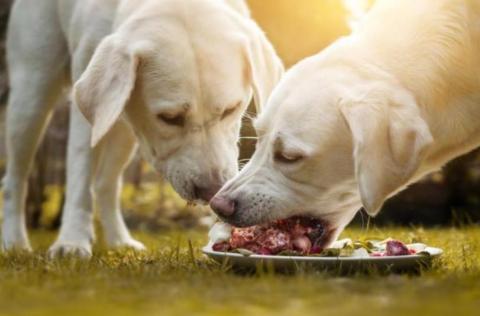
What Do Dogs Really Eat? Omnivores vs. Carnivores Explained
Published on April 15 by Julia
The question of whether dogs are carnivores or omnivores often sparks debate among pet owners, veterinarians, and nutritionists. After all, dogs seem to love meat—but they also snack on fruits, vegetables, and even grains. So what’s the truth? Let’s dig into the biology, behavior, and evolution of our furry companions to find the answer.
🐺 Origins: From Wolves to Pets
Dogs (Canis lupus familiaris) are descendants of the gray wolf (Canis lupus), a species classified as a facultative carnivore—an animal that primarily eats meat but can survive on non-meat sources when necessary.
Over thousands of years of domestication, dogs have adapted to living alongside humans. This co-evolution led to significant changes in their digestive systems and eating behaviors, allowing them to process a broader range of foods than their wild ancestors.

🍽️ What’s the Difference?
To understand where dogs fit, let’s break down the terms:
- Obligate Carnivores (e.g., cats): Must eat meat to survive; cannot thrive on a plant-based diet.
- Facultative Carnivores (e.g., wolves, dogs): Prefer meat but can digest plant material and survive on mixed diets.
- Omnivores (e.g., humans, pigs, bears): Thrive on a varied diet of both animal and plant matter.
Dogs fall somewhere between facultative carnivores and omnivores.
🧬 Scientific Evidence for Omnivorous Traits
Dogs have developed several traits that suggest an omnivorous capability:
- Amylase Production: Dogs produce amylase, an enzyme that helps break down carbohydrates—something obligate carnivores like cats do not.
- Adapted Digestive Systems: Dogs have longer intestines than pure carnivores, aiding in plant digestion.
- Taste Preferences: Dogs can detect sweetness, which helps them identify fruits and some vegetables.
- Genetic Adaptation: A study published in Nature (2013) showed that dogs have multiple copies of genes related to starch and glucose digestion—adaptations likely developed during domestication.
🥩🥦 So What Should Dogs Eat?
Dogs can eat a variety of foods, but balance is key. An ideal canine diet includes:
- High-quality animal protein (chicken, beef, lamb, fish)
- Fats for energy and coat health
- Carbohydrates like rice or sweet potatoes for energy and fiber
- Fruits & vegetables for vitamins, minerals, and antioxidants
Commercial dog foods are typically formulated to meet these nutritional needs. However, raw, home-cooked, and specialty diets should always be planned with a veterinarian or pet nutritionist.

⚠️ Common Misconceptions
- Myth: Dogs are strict meat-eaters.
Truth: While they love meat, dogs can digest and benefit from plant-based foods. - Myth: Grains are bad for dogs.
Truth: Unless your dog has a grain allergy, grains can be a healthy energy source. - Myth: Dogs don’t need vegetables.
Truth: Many vegetables provide essential nutrients and fiber.
🐶 Conclusion: Omnivores with Carnivorous Roots
While dogs evolved from carnivorous wolves, their digestive flexibility, genetic adaptations, and behavior support the idea that modern dogs are omnivores—or at the very least, highly adaptable facultative carnivores.
Ultimately, the best diet is one that supports your dog’s health, lifestyle, and specific needs. Whether you feed kibble, raw, or home-cooked meals, make sure it's complete, balanced, and vet-approved.